Written by Sasha Wirth and photographed by Paige Green
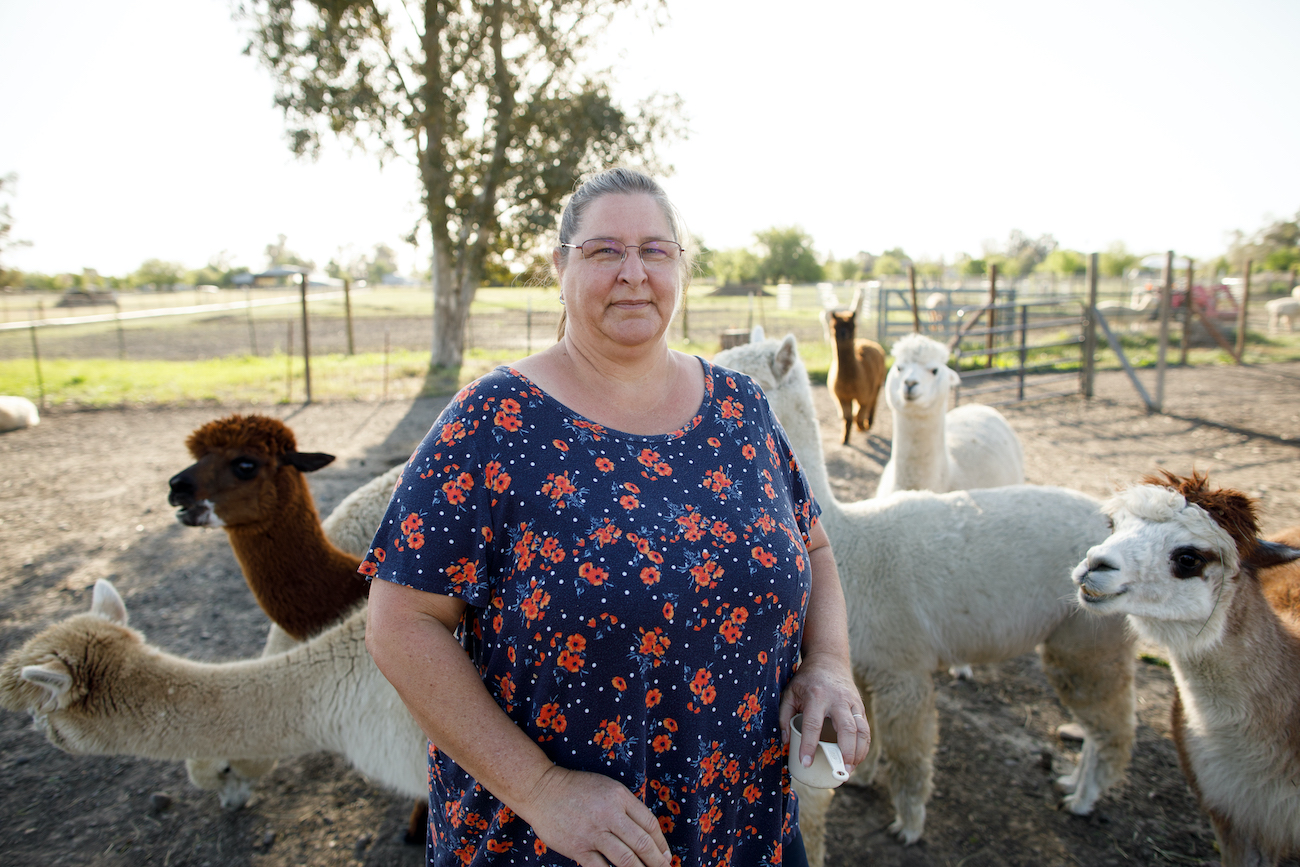
The Irresistible Charm of Alpaca Fiber
A baby blanket, crocheted from soft and cozy alpaca fiber, was Charlene Schmid’s first glimpse into a new world of fiber. She was making it for her daughter, and the experience of working with such a silky, luxurious fiber left an indelible impression. “I didn’t want to use any other yarns after that,” she says with a satisfied laugh. “Alpaca was it for me.”
And while others might have been content to stock their craft cupboard with skeins of alpaca fiber after having such a revelation, Schmid took a different approach. She went out and bought an alpaca.
“It was a gradual process, but one that was inevitable,” she smiles. “I was a Montessori teacher and had been taking my students to visit a local alpaca farm for a few years. There was a great vintage machine there, and I wanted them to appreciate the work and skill of the people involved in the production of the fiber from beginning to end. One thing led to another, and I learned that others in Davis wanted to start an alpaca cooperative. That was the push I needed.”
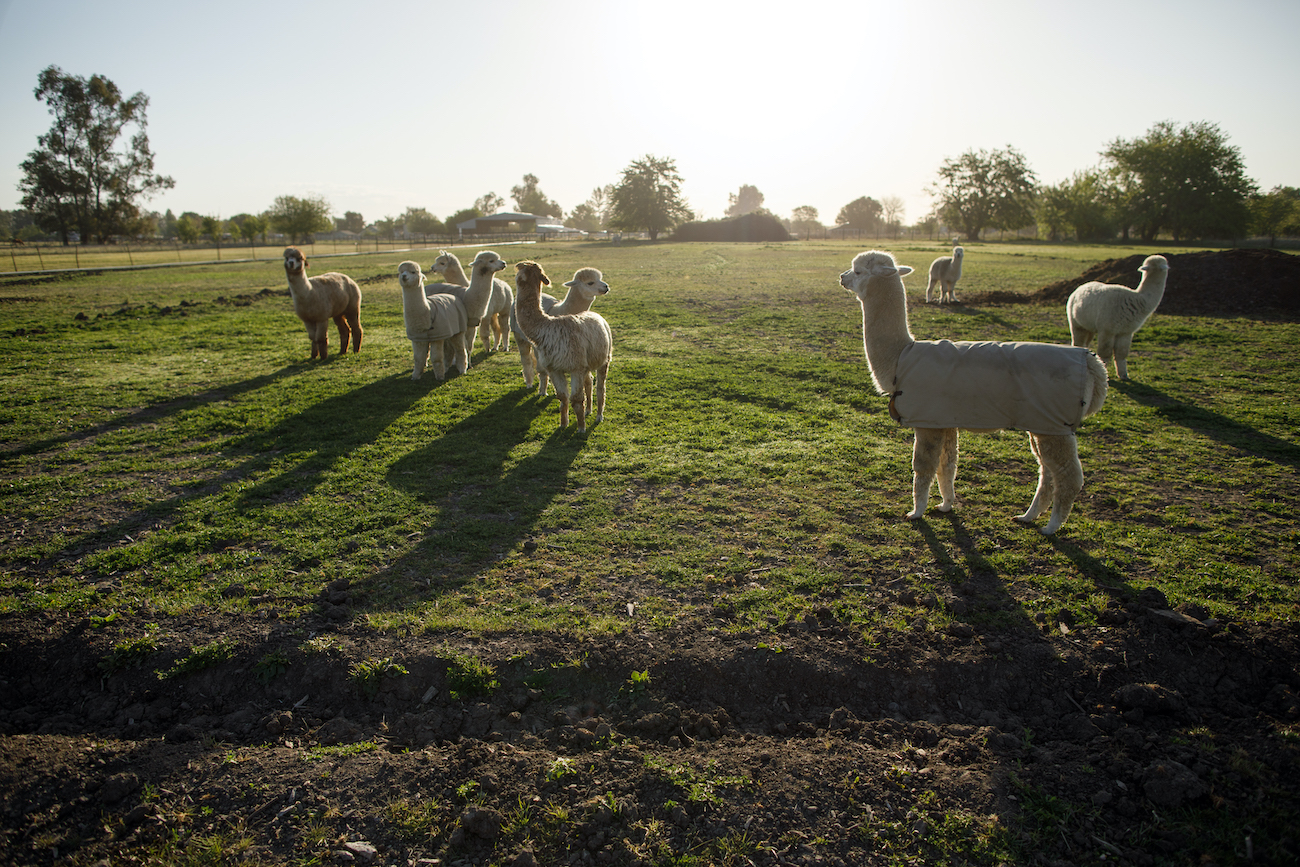
She was soon the proud owner of Maddy, her first rose-grey alpaca. “I was advised to buy the alpaca whose fleece color I liked best because I would get a lot of yarn. So I did! Maddy made the most beautiful yarn. Many of my treasured scarves are from her fleece.”
The purchase of Maddy nudged Schmid to begin imagining what a different life might look like. “I dreamed of looking out my window and seeing alpacas there, serenely grazing. My version of the bucolic life,” she shares. With that vision in mind, she and her family decided to sell their Davis property and move to a five-acre plot in Vacaville. It wasn’t long before one alpaca turned into four, and steadily the number grew and grew until the size of the herd reached its current number of 45.
Maddy is still there, enjoying her life of retirement. There is also Sabrina – affectionately called the ‘alpaca whisperer’ – who comforts and protects any fellow alpaca who isn’t feeling well, letting Schmid know they need care and attention. Lil’bit is a particular favorite. Tiny for her age with bright white fleece, she brims with personality and love, following around members of Schmid’s family like a puppy. And then there are others who have taken on the self-sanctioned role of guards, letting everyone know when a stray plastic bag is in the vicinity or a neighbor’s cat is on the prowl.
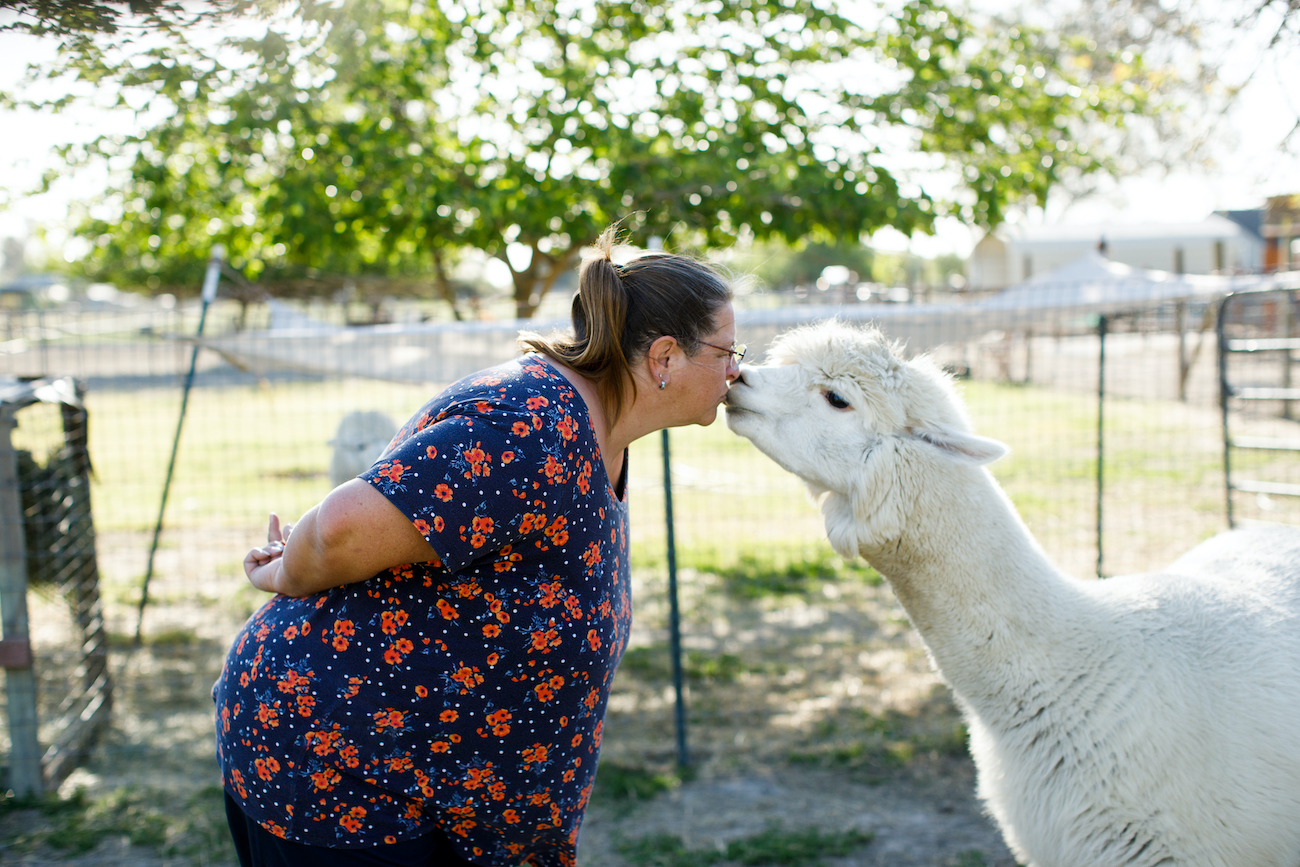
Each alpaca has its own distinct personality – social, curious, aloof, shy – and Schmid delights in them all. “Alpacas are such amazing creatures,” she says. “I really enjoy just sitting outside with them, sipping a glass of wine. They come up and smell my hair or nibble at my pants. They feed off my energy, and it’s rewarding to see them comfortable and at peace. After all, a happy alpaca produces a happy fiber.”
Slowing Down to Provide the Best Care for the Alpacas
It is this sentiment –understanding the connection between how meeting the core needs of her alpacas allows them to produce the best fiber possible – that has inspired and shaped her business, Integrity Alpacas. However, this simple notion came with its own learning curve. When Schmid began her business, the trend and expectation were to take alpacas to shows or farmers’ markets. Many farms also hosted Alpaca Days or brought their animals to California Agriculture Day at the State Capitol. To learn as much as she could about the industry, Schmid became president of Calpaca, an organization representing alpaca owners, breeders, and enthusiasts.
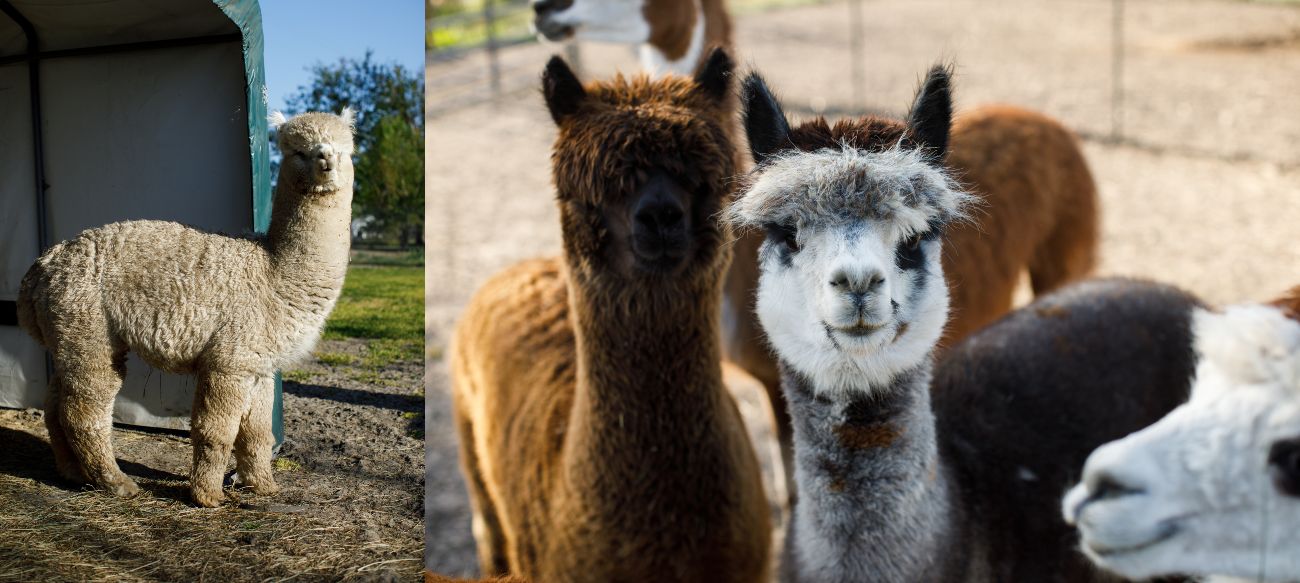
“I did everything you are supposed to do,” says Schmid with a sigh. “I took my alpacas to all the events and did all the promotions, but something didn’t sit right with me. I began to recognize how stressful all this activity was for my animals and how they were suffering. Alpacas do not like to be removed from their home, so instead of putting all their energy into creating healthy, beautiful fleece, they were using it to cope. I decided I needed to swerve from promoting the alpaca to creating the best I can from the alpaca.”
So that is exactly what she did, and she’s never looked back. Schmid said farewell to markets and Alpaca Days, deciding to keep her animals on the property at all times and not engaging in agrotourism efforts. By quieting down, she connected more intimately with her animals, the land around her, and the greater fibershed movement.
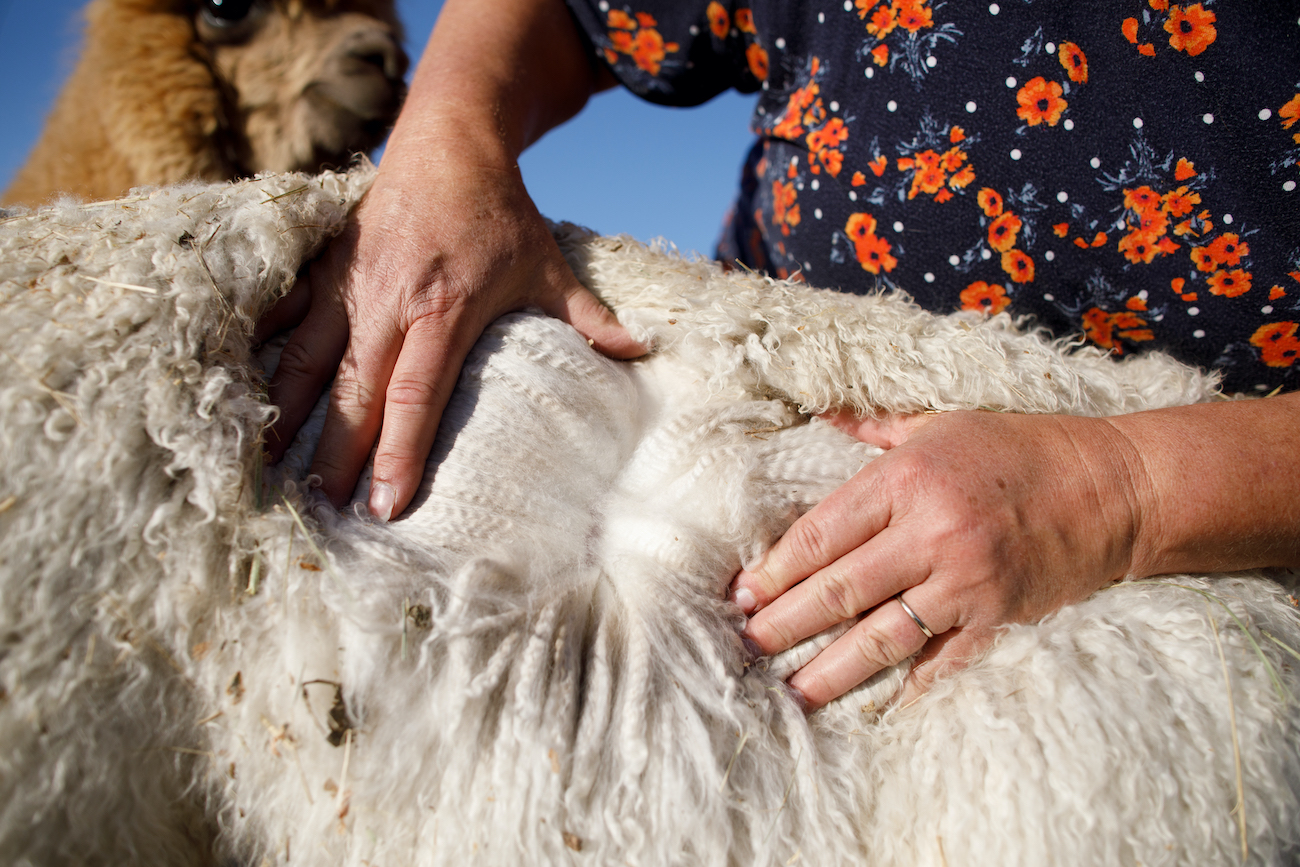
Schmid obtained certification as a SUNY Master Sorter and learned how to sort, grade, and class the fiber she produced. This in-depth knowledge of alpaca fleece not only ensured she was creating top-of-the-line fiber but also enabled her to face industry challenges head-on. From suffering losses at the hands of mills ill-equipped to work with alpaca fleece to recognizing the environmental impact of the fibers she chose for creating blended yarns, Schmid made sure her business was living up to its name.
For the uninitiated, the thickness (measured in microns) of alpaca fiber is not as consistent as sheep’s wool. Their shorn fleece (called a ‘blanket’ for each alpaca) can vary 10 microns per blanket, which means a smaller yield overall. And since alpaca fiber is naturally drapey without memory, it needs to be blended with other fibers – all with similar micron counts – to keep its shape.
While Schmid had some promising pairings with SeaCell and Tencel fiber, she was disappointed to learn that many of the options available to her were not environmentally friendly, especially during the manufacturing process. “Which is why finding Sally Fox and her wonderful merino wool was such a relief!” she says happily. “We’ve done two runs with her organic merino, and it is our bestselling yarn. It’s just fabulous!”
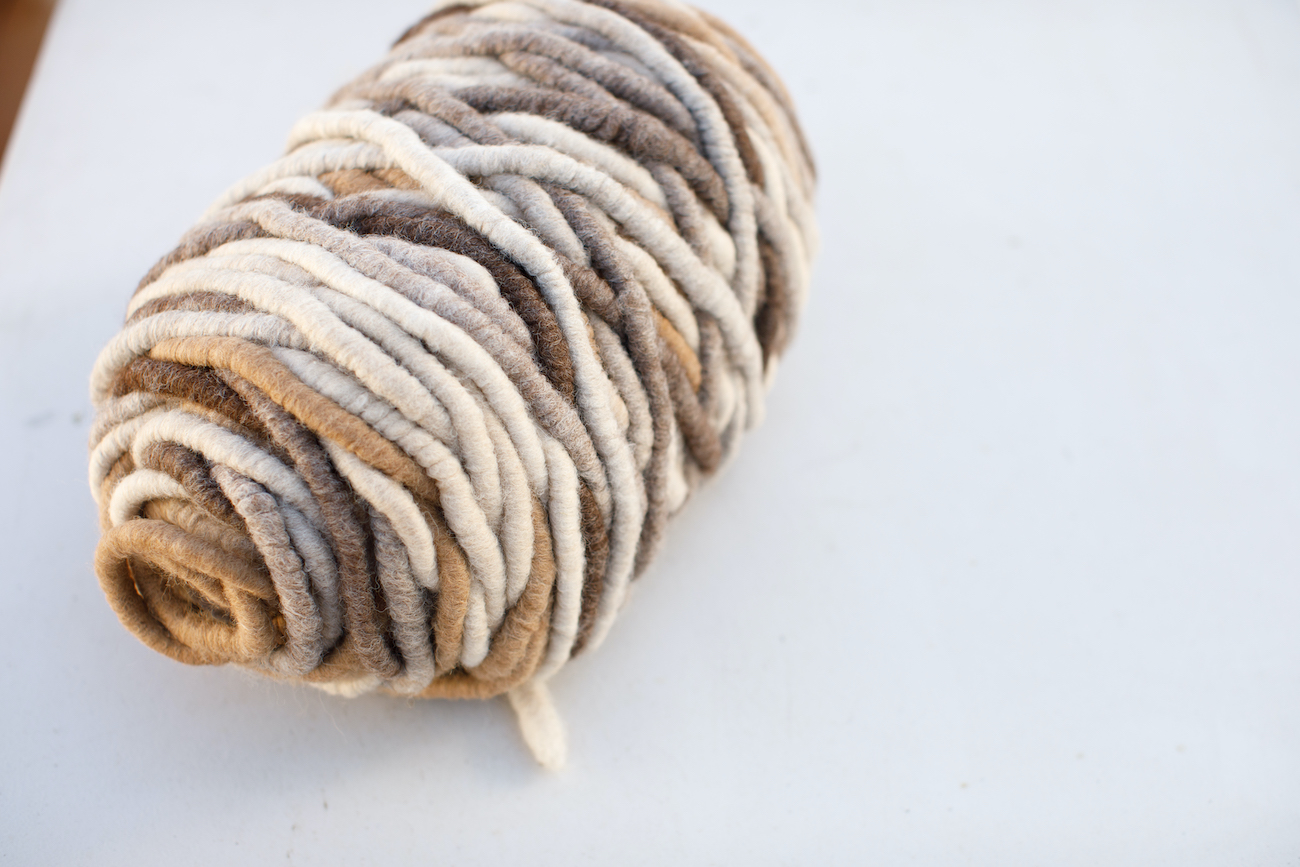
“There is a premium cost for small businesses when processing fiber. There is little room when it comes to money and profit, so the more poundage, the better. If possible, it is imperative to join with other alpaca farms. But the results haven’t always turned out well. We recently did a combined commercial run, and it ended up being a nightmare.”
Many mills either do not have the expertise in processing alpaca fiber, or the prices are cost-prohibitive. Schmid found an ideal mill in Washington, but the service taxes were too high. Another mill in Iowa, however, has been successful, giving her hope.

“I try to control what I can,” she says candidly. “There is only so much you can do, and I’ve chosen to focus on what is possible.” To that end, she’s turned her attention to natural dyeing, which – as with all things alpaca – brings its own challenges and rewards.
“Alpaca fiber doesn’t behave like sheep wool, which has set me up for lots of experimentation,” she says. “The way it absorbs and showcases color is different, and since my alpaca fiber always ends up on the outside of the blends (due to its larger micron count, which gets pulled to the exterior during spinning), the end color result is important.” Alpacas also come in a whole spectrum of colors – 22 varieties of fawns, greys, and browns – and their fiber ranges from coarse to very fine. All of these factors make the dye process tricky, especially since Schmid has decided to only use natural dyes at this time.
“I’m trying to keep the colors to what is growing naturally in my local landscape and fibershed,” she explains. “I use plants like hollyhock and weld, which come from a local, community-grown collection. Next, I want to try pokeberry. I’m also looking into Fibershed’s indigo project. There are so many options to explore!” But what she finds particularly exciting is that the natural brilliant sheen of alpaca fleece remains throughout the entire fiber-making process, even after dyeing. “Brightness is part-genetic and part-environment (i.e., diet) for the alpacas, and since there is no lanolin in their fleece, no scouring is needed. The dirt simply washes off. The end product is, therefore, lively and beautiful, and this makes me proud about what I am raising. It is also so much better for the environment.”
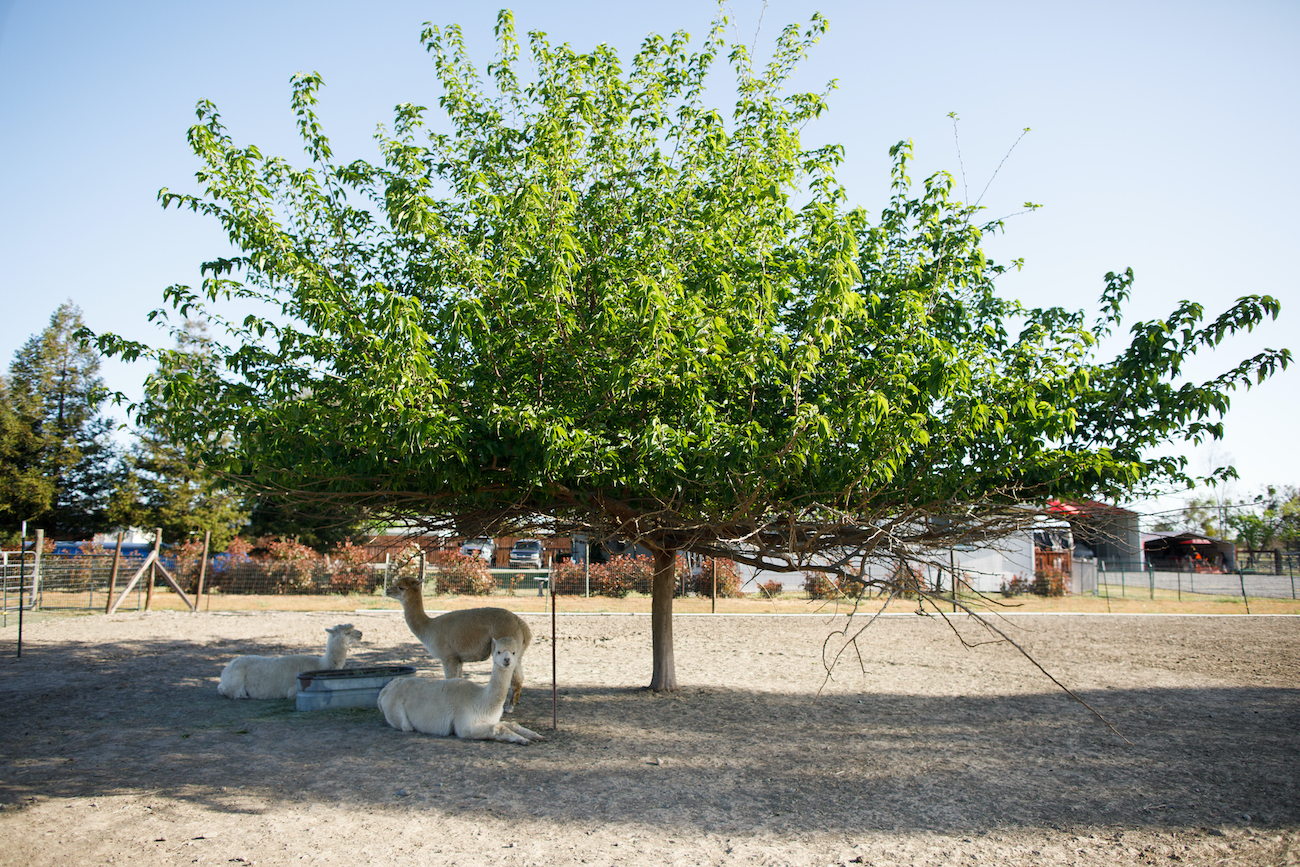
Integrating Climate Beneficial Practices
Every decision she makes circles back to her conviction that a happy alpaca produces a happy fiber. As time has gone on, her understanding and interpretation of this have expanded to include her land. “Alpacas not only receive what they need from the land, but they are also complementary to it,” she says. “Their soft-padded feet don’t do much damage, and they bite off the top of grass instead of pulling it off. It is a lovely, symbiotic relationship, and we realized that we had the power to shape our five acres into something that would not only make a difference for our animals but also contribute positively to climate change.”
The back three acres of the property have been designated for work within Fibershed’s Climate Beneficial™ program. Integrity Alpacas is a Climate Beneficial Transitional producer and received support last year for their land stewardship efforts from Fibershed’s Carbon Farm Seed Fund. Their efforts include planting fruitless mulberry trees (which provide shelter, shade, and a food source for the alpacas, along with general carbon sequestration) and bringing the property’s Delta clay soil back to life. “The land becomes a big pond in the winter due to the clay. The water just sits on top of the soil, which is not good for the environment. By working the land in sections and tilling in alpaca manure, we’ve been able to improve its fertility and bring growth back,” she says. “It’s all about integrity. Leaving behind better than what was there before. That is what we are doing.”
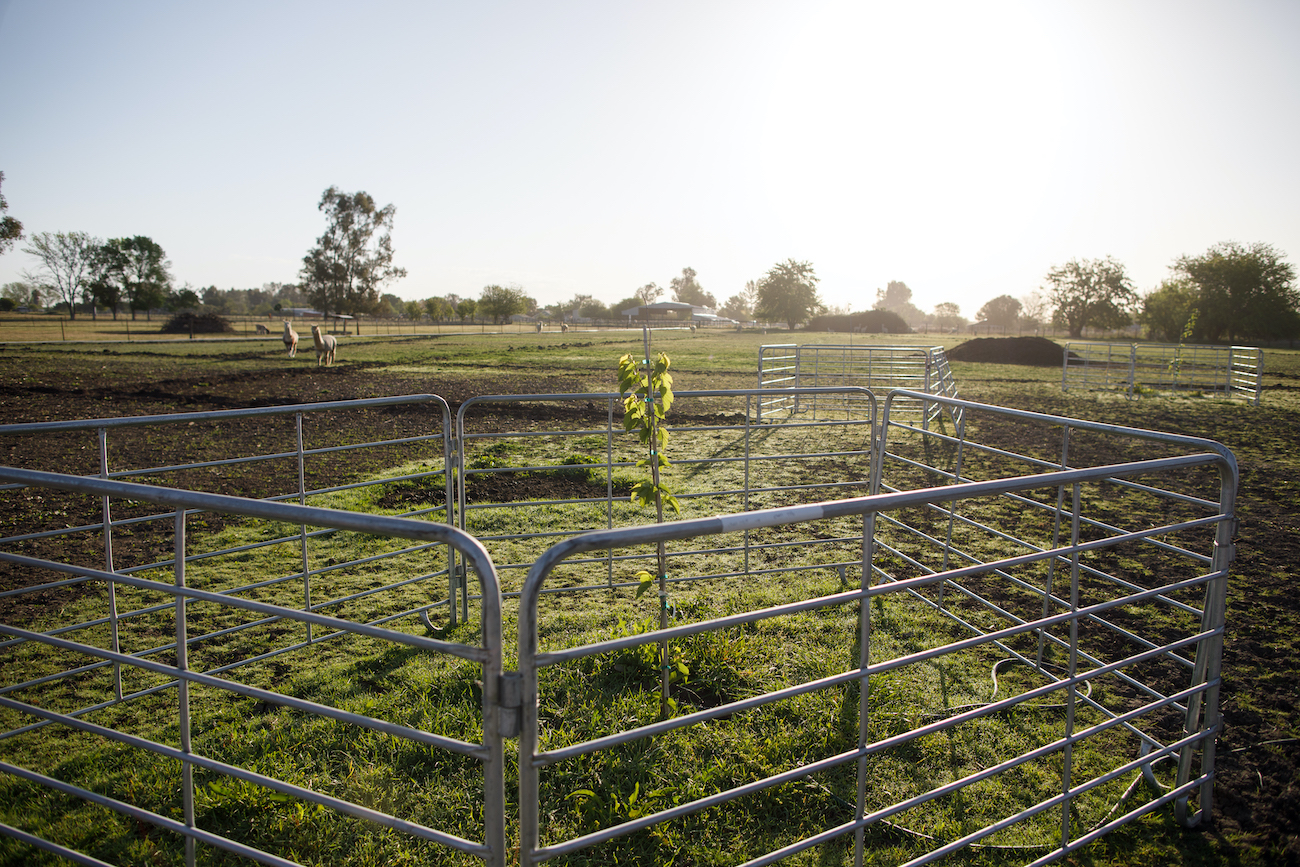
There is also a more practical, business-driven consideration for ensuring the land remains as healthy and vibrant as possible: the lifespan of Schmid’s alpacas. While alpacas can live up to 22 years of age, their fiber is only useful up to about six years of age. That leaves a long span of time to feed and care for non-producing animals, given there is no acceptable terminal market for alpacas as there is for sheep.
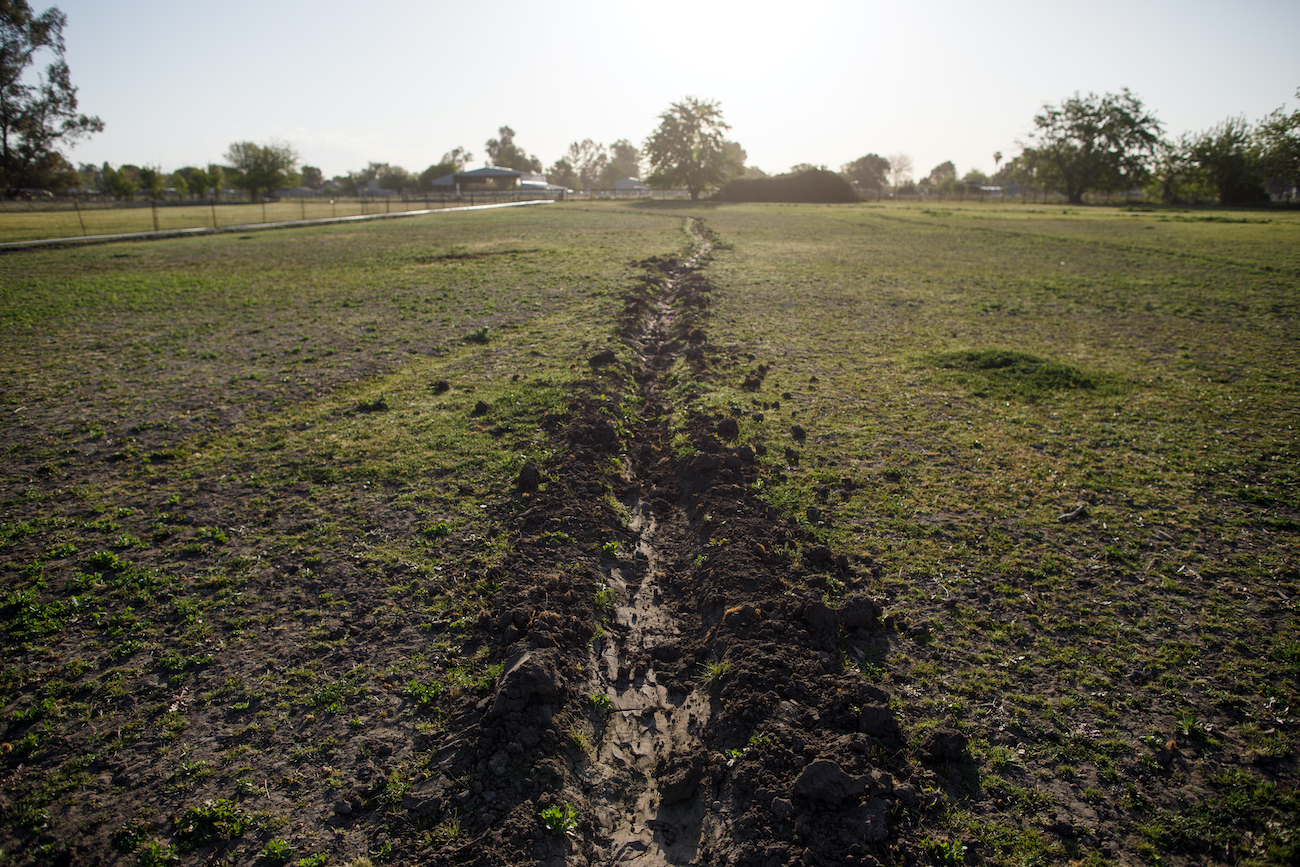
“I have my emotional herd that will never leave the property. I will feed them forever. But it becomes a real dilemma when the tough decisions need to be made,” sighs Schmid. “In other places, the resolution is the meat market. But that option isn’t available in California, where USDA certification is required.”
Breeding is one route that Schmid is exploring, along with selling some of her animals. It is a hard reality to grapple with and one she does not take lightly. So in the interim, she makes sure that she is giving her alpacas the very best, and in return, they are doing the same.
It is late morning, and Schmid sits at her desk, which faces out onto her land. All is quiet and peaceful. A group of alpacas graze calmly in her sightline. Then the sprinklers turn on, and baby alpacas begin to prance and run joyously through the mist. Others begin to wander up to her window, peering curiously inside. At that moment, it’s undeniable – it is her vision, first imagined many years ago, that comes to life through her honest, passionate, and hard-working efforts. And evolving still.
“I’ve realized I’m not just an alpaca rancher; I’m a fiber farmer, too,” beams Schmid. “I’m able to produce great fiber and then work with others who are also creating incredible fibers. The whole fibershed is greater than the sum of its parts, and we’re working in a way that honors and respects people, animals, and the land. What we’re doing fits me perfectly.”
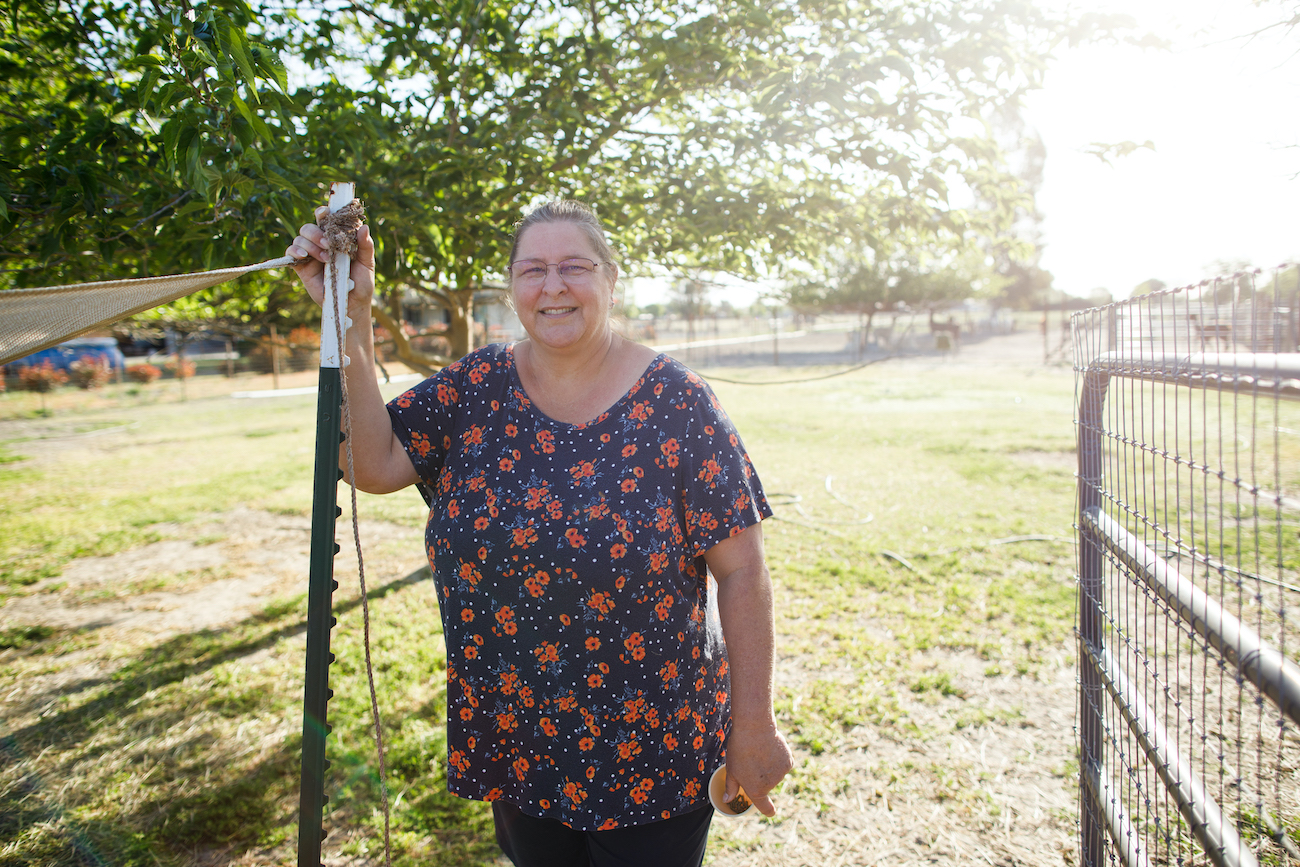
It’s clear the alpacas aren’t the only ones happy around here. You can find Integrity Alpacas & Fiber on their website and Instagram. Learn more about Fibershed’s Producer Program, a membership-based network of farmers, ranchers, designers, sewers, weavers, knitters, felters, spinners, mill owners and natural dyers living and working within 51 counties in the North and Central regions of California.
Read about more incredible alpaca farms here.

